Malta tourism is centered around its reputation as a popular Mediterranean destination known for its rich history, vibrant culture, and stunning natural scenery. The Maltese Islands attract visitors with their ancient temples, fortified cities, beautiful beaches, and clear blue waters.
Tourism plays an important role in Malta’s economy, as it contributes about 15% of its GDP and creates thousands of jobs. Additionally, each year, over 2.5 million tourists come to experience Malta’s culture and natural beauty.
This article will cover everything you need to know about Malta tourism, including visa requirements, top attractions, transportation costs, the best times to visit, and more.
Overview of Malta
Category | Information |
Currency | Euro (€) |
Official Languages | Maltese and English |
Climate | Mediterranean; hot dry summers, mild winters |
Visa Requirements | Visa-free for many countries (including US, EU) up to 90 days; check specific rules |
Time Zone | Central European Time (CET) UTC +1 |
Safety | Very safe with low crime rates |
Transportation | Public buses, taxis, car rentals available |
Malta Tourism Overview
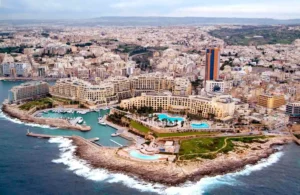
According to the Malta Tourism Authority, people are drawn to Malta for its abundant sunshine, stunning Mediterranean climate, historical heritage, and the cultural scene. Some of the best places to visit in Malta include the fortified streets of Valletta, the medieval charm of Mdina, and the beauty of Gozo and the Blue Lagoon.
Traveling to Malta: Visa Requirements
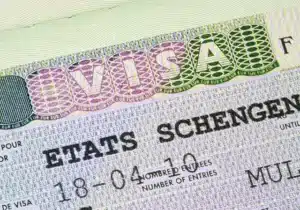
Travelers need to apply for the appropriate visa or permit before arrival for long term stays for different purposes like work, study or residence. Some options include the Malta Digital Nomad Visa for remote workers, the Malta Retirement Program for retirees and Malta Permanent Residence Program for those who are interested in investing in Malta and obtaining permanent residence through investment.
Malta is a well sought after destination for retirees and rank 8th on the Global Citizen Solutions Global Retirement Report. Applicants need proof of accommodation, sufficient financial means, health insurance, and a clean criminal record.
Why visit Malta?
Sunny weather year-round – Malta has more than 300 days of sunshine annually, making it one of Europe’s sunniest destinations. This consistent warm climate attracts visitors all seasons, especially from colder countries like the UK and Germany.
- Beaches and crystal-clear waters – The island is famous for its swimming spots, including Golden Bay, Mellieħa Bay, and the Blue Lagoon in Comino, which is known worldwide for its turquoise waters perfect for snorkelling and diving.
- Historic and cultural heritage – Malta has three UNESCO World Heritage Sites, including the capital city, Valletta, the Ħal Saflieni Hypogeum, and seven Megalithic Temples that are older than the pyramids of Egypt. Tourists appreciate exploring centuries of Malta’s history from the Knights of St. John to World War II.
- Blue Lagoon in Comino – This is another natural attraction drawing thousands of day-trippers every summer. It offers boat tours, water activities, and one of the most photographed landscapes in the Mediterranean.
- English as an official language – Alongside Maltese, English is widely spoken, which makes communication easy for tourists, especially from the UK, Ireland, and other English-speaking countries.
- High safety standards – Malta consistently ranks among the safest countries in Europe with low crime rates, which reassures families and solo travelers.
- Mediterranean cuisine – Tourists love local specialties like rabbit stew, pastries, fresh seafood, and Maltese wines, which are served in seaside restaurants with scenic views.
- Lively festivals and events – The island features traditional village festas with fireworks, the Carnival of Malta, and the Isle of MTV music festival, which attracts both locals and international visitors.
- Easy travel connections – Malta International Airport has direct flights to major European cities. This is convenient for anyone looking to do a quick trip for weekend getaway or longer stays.
- Cultural blend – Malta’s architecture, food, and traditions reflect a mix of European and North African influences, giving visitors a unique cultural experience in a small, easily explored island nation.
Top 10 attractions in Malta Tourism
These are the top 10 attractions and things to do in Malta that tourists love. They show the best of what Malta has to offer, from beautiful sights to interesting history and fun activities.
St. John’s Co-Cathedral, Valletta
This cathedral is a major attraction in Malta because it holds famous paintings by Caravaggio, a groundbreaking Baroque artist known for his dramatic use of light and realism. His works in the cathedral are considered masterpieces and are some of the best examples of Baroque art in Europe. Visitors can enjoy the stunning architecture and learn about the art and history through guided tours. Entry costs about €15, with tours around €20.
Mdina Old City, Mdina
Mdina is called the “Silent City” because of its quiet, peaceful atmosphere and narrow, calm streets where traffic is very limited. It’s is one the best cities in Malta that feels like stepping back in time with its medieval buildings and peaceful surroundings. Visitors can explore museums and enjoy amazing views of Malta from the old city walls. Walking around is free, and museum tickets usually cost between €10 and €15.
The Blue Lagoon, Comino
The Blue Lagoon is renowned for its crystal-clear turquoise waters, which are the best for swimming, snorkeling, and relaxing on the beach. Boat trips to the lagoon cost about €12 to €15 for a round trip, and snorkel gear rentals are about €10 to €15.
Ġgantija Temples, Gozo
The Ġgantija temples are among the oldest freestanding structures globally, which is another look into Malta’s ancient history. Visitors can tour the site for around €10 to €12.
Upper Barrakka Gardens, Valletta
The Barrakka Gardens feature peaceful walking paths surrounded by beautiful greenery which makes it a perfect spot to relax. They provide stunning panoramic views of the Grand Harbour and the historic Three Cities. One of the garden’s highlights is the daily noon cannon firing, a tradition that draws many visitors. Luckily, entry to the gardens is free.
Popeye Village, Mellieħa
The Popeye Village in Mellieħa was originally a film set. This colorful village is now a family-friendly theme park with boat rides, live shows, and play areas for children. Entry tickets cost between €15 and €18, with boat rides costing around €8 to €12.
Marsaxlokk Fishing Village, Marsaxlokk
Marsaxlokk Fishing Village is famous for its brightly painted fishing boats called luzzus and a lively Sunday fish market. Visitors can enjoy fresh seafood at the waterfront restaurants, experiencing the village’s charming harbor atmosphere. Visiting the village is free, while meals cost between €15 and €30.
Ħal Saflieni Hypogeum, Paola
This UNESCO World Heritage Site is an underground prehistoric burial complex. Visits require guided tours, which cost about €35 and must be booked well in advance due to limited daily visitors.
Dingli Cliffs, Dingli
Dingli Cliffs in Dingli are the highest point in Malta with beautiful views of the Mediterranean Sea, especially during sunset. This natural attraction is popular for hiking, photography, and enjoying peaceful walks along the cliff edges. Visitors can explore the area freely, as there is no entry fee.
Fort St. Angelo, Birgu (Vittoriosa)
This historic fort played a key role in Malta’s defense and now serves as a museum. Visitors can explore the fortress, military exhibitions, and enjoy harbor views. Entry costs about €10 to €12.
When is the best time to visit Malta?
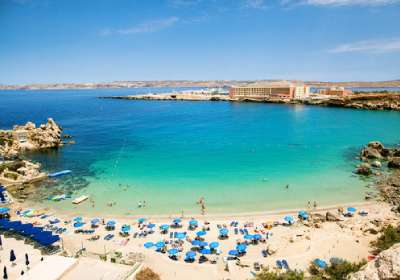
Additionally, these months have fewer tourists, so popular attractions are less crowded, and accommodation prices are generally lower.
Summer (July and August) is hot and busy, while winter is mild but quieter, with some attractions having limited hours.
Best Transportation in Malta for Tourists
Malta’s transportation includes buses, taxis, ferries, car rentals, and walking paths, which makes it easy to get around. The public bus network is the main form of transport and connects to most towns, cities, and tourist spots. Buses are affordable and run frequently, especially in Valletta and along the coast. Tourists can also use the Explore Card for unlimited bus travel over several days.
Ferries also run regularly between Cirkewwa and Mgarr harbor to Gozo, and also connect Malta to Comino, known for the Blue Lagoon. Taxis and ride-hailing apps like Bolt are available but are more expensive than buses, and are best for short trips or late-night travel.
Car rentals are another popular option for exploring rural areas in Malta and Gozo, but keep in mind, in Malta, they drive on the left side. Walking is great in compact cities like Valletta and Mdina, where narrow streets and pedestrian zones make exploring easy.
Transportation Mode | Average Cost (€) |
Public Bus | Single ticket: €2; Explore Card: €25 (7 days unlimited) |
Ferry (Malta to Gozo) | Round trip: €4.65 |
Ferry (Malta to Comino) | One-way: €10–€12 |
Taxi | Starting fare: €4.50 + €1.13 per km |
Ride-hailing (e.g., Bolt) | Varies, approx. €5–€15 for short trips |
Car Rental | Daily rental: €30–€50 |
Walking | Free |
Accommodation Costs in Malta
Accommodation Type | Valletta (Capital) | St. Julian’s (Nightlife Hub) | Sliema (Shopping & Waterfront) | Gozo (Quieter Island) | Mellieħa (Beach Town) |
Luxury Hotel (per night) | €150 - €250 | €160 - €280 | €140 - €260 | €120 - €200 | €110 - €180 |
Mid-range Hotel (per night) | €80 - €130 | €90 - €150 | €85 - €140 | €70 - €120 | €65 - €110 |
Budget Hotel / Guesthouse (per night) | €50 - €80 | €55 - €90 | €50 - €85 | €40 - €70 | €40 - €65 |
Self-catering Apartment (per week) | €350 - €600 | €400 - €700 | €350 - €650 | €300 - €550 | €280 - €500 |
Hostel (per night) | €20 - €35 | €25 - €40 | €20 - €35 | €15 - €30 | €15 - €30 |
Travel Tips for Tourists in Malta
Book popular attractions in advance — Sites like the Ħal Saflieni Hypogeum have limited daily visitors, so secure your tickets early to avoid disappointment.
- Use public transport for easy and affordable travel — Malta’s bus network connects most key destinations and is budget-friendly compared to taxis.
- Stay hydrated and protect yourself from the sun — Malta’s Mediterranean climate can get hot, especially in summer, so bring sunscreen, a hat, and water.
- Carry cash for small vendors and markets — While many places accept cards, some local markets and smaller shops prefer cash payments.
- Wear comfortable shoes — Malta’s historic towns and natural sites often have uneven streets and walking paths, so sturdy footwear will make exploring easier.
How Can Global Citizen Solutions Help You?
Global Citizen Solutions is a boutique migration consultancy firm with years of experience delivering bespoke residence and citizenship by investment solutions for international families. With offices worldwide and an experienced, hands-on team, we have helped hundreds of clients worldwide acquire citizenship, residence visas, or homes while diversifying their portfolios with robust investments.
We guide you from start to finish, taking you beyond your citizenship or residency by investment application.
Frequently Asked Questions about Malta Tourism
Is Malta good for tourists?
Yes, Malta is a great destination for tourists. It offers a rich mix of history, beautiful beaches, vibrant culture, and outdoor activities. Whether you enjoy sightseeing, diving, or relaxing by the sea, Malta has something for everyone.
Is Malta friendly to Americans?
Malta is very welcoming to American visitors. English is an official language, making communication easy. Many Americans find the culture, climate, and hospitality comfortable and enjoyable.
Is Malta expensive to visit?
Malta is generally affordable compared to many other European destinations. Costs for accommodation, food, and transportation are moderate, with options for both budget and luxury travelers.
What is the best month to go to Malta?
The best months to visit Malta are from May to June and September to October. During these times, the weather is warm and pleasant, and tourist crowds are smaller than in peak summer months.
Do I need a visa to visit Malta?
Visitors from many countries, including the US and EU, do not need a visa for stays up to 90 days. It’s important to check your specific country’s visa requirements before traveling.
What language do they speak in Malta?
English and Maltese are the official languages. English is widely spoken, so tourists generally have no trouble communicating.
Is Malta safe for tourists?
Malta is considered very safe for tourists. Crime rates are low, and the islands are well-patrolled, making it a secure destination for travelers.
What currency is used in Malta?
Malta uses the Euro (€), so it’s helpful to have some cash for markets and small shops, though cards are widely accepted.
How do I get around Malta?
Public buses cover most of the island and are affordable. Taxis and car rentals are also available, but traffic can be busy during peak seasons.
What activities are popular in Malta?
Popular activities include exploring historic sites, diving in clear waters, taking boat trips, hiking, and enjoying festivals and local cuisine.

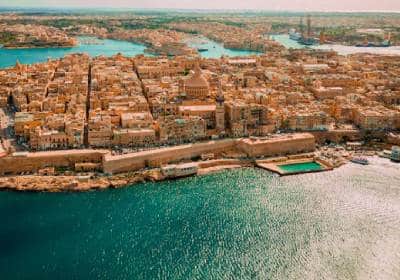 Sunny weather year-round – Malta has more than 300 days of sunshine annually, making it one of Europe’s sunniest destinations. This consistent warm climate attracts visitors all seasons, especially from colder countries like the UK and Germany.
Sunny weather year-round – Malta has more than 300 days of sunshine annually, making it one of Europe’s sunniest destinations. This consistent warm climate attracts visitors all seasons, especially from colder countries like the UK and Germany.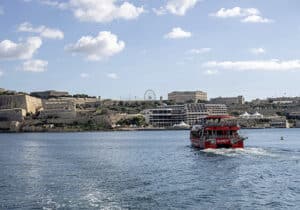 Book popular attractions in advance — Sites like the Ħal Saflieni Hypogeum have limited daily visitors, so secure your tickets early to avoid disappointment.
Book popular attractions in advance — Sites like the Ħal Saflieni Hypogeum have limited daily visitors, so secure your tickets early to avoid disappointment.

